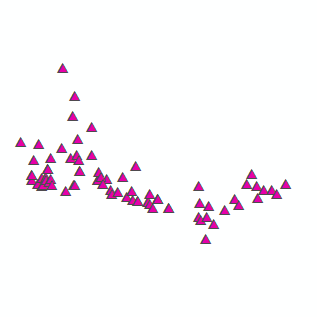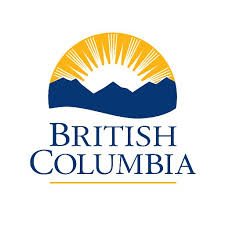First Nation
Type of resources
Available actions
Topics
Keywords
Contact for the resource
Provided by
Formats
Representation types
Update frequencies
status
-

A tribal council is a grouping of First Nations with common interests who voluntarily joined together to provide services to member First Nations. The tribal council geographic location dataset contains the geographic location of all tribal councils in Canada as points as well as basic attributes data. Each tribal council point represents its address as it is registered in Indigenous and Northern Affairs Canada (INAC) Indian Government Support System (IGSS). A connection with the IGSS is in place to ensure that any update to the system is reflected in the attributes data associated with the geography of each tribal council. This dataset is Indigenous Services Canada (ISC) and Crown-Indigenous Relations and Northern Affairs Canada (CIRNAC) official source for Tribal Councils geographic location on maps.
-

DEPRECATED: During a declared emergency event, this dataset will include the communities affected by Evacuation Order Orders and Alerts, which represents the populated communities and First Nations in the province, and their current evacuation status.
-

This polygon dataset shows Crown land parcels covered by formal flood compensation and other settlement agreements with specified First Nations. The purpose of this dataset is to show Crown land parcels contained within formal flood compensation and other settlement agreements with specified First Nations (does not include Treaty Land Entitlement sites). The Crown lands are not intended for transfer to Government of Canada to be set apart as Reserve land. It is intended that the parcels will be held in fee simple, meaning a certificate of title to the land will be issued to a First Nation corporation.Best efforts have been taken to reasonably illustrate the parcels within the dataset as set out in the respective agreements. All boundaries are to be considered approximate and for illustrative purposes only. The mapped parcels are not removed (or regularly updated) following the survey or transfer of any Crown (Manitoba) land to Canada to be set apart as Reserve for the respective First Nation.For more information on individual agreements, please visit the Manitoba government website: https://www.gov.mb.ca/inr/settlements-and-other-agreements/index.htmlFields included [Alias (Field Name): Field description]OBJECTID (OBJECTID): Sequential unique whole numbers that are automatically generatedID Number (ID): A unique number identifying the land parcelFirst Nation Group (FIRST_NATION): Name of the First Nation part of the land claimSite Name (SITE_NAME): Name of the land parcelSite Type (SITE_TYPE): Site type descriptionArea in Square Meters (AREA): Land parcel area in square metresArea in Hectares (HECTARES): Land parcel area in hectaresArea in Acres (ACREAGE): Land parcel area in acresAgreement Name (AGREEMENT): Name of the settlement agreement under which the land parcel is administeredDate of Agreement (AGREE_DATE): Date of the settlement agreement under which the land parcel is administered
-

This application allows users to interactively view Crown land interest data layers and explore land parcels. It is intended to be used as a research tool to assist land research on interests on British Columbia Crown land. The tool can be used to view Crown land interest data, imagery, add your own data, and print maps. This application does not include all interests on Crown land. Rather, it provides a curated selection of publicly available data. Only publicly available interest layers are included. No confidential layers are displayed. User-added data is only accessible to the individual who adds it. This data is stored temporarily and will not persist if the user clears their browser cache. Due to volume of data included layers may take time to load. To improve draw time, zoom in as closely as possible to your area of interest. Data is sourced live from the BC Geographic Warehouse, which may occasionally experience temporary outages. The information presented on this map is provided without prejudice for the purposes of land research. It is subject to revision and does not constitute a legal definition.
-

To support a wide range of efforts to understand the geographic context and historical conditions of the Indian residential schools sites for a wide range of stakeholders, Indigenous Services Canada has created a Web service to access and visualize historical aerial photography for those sites. The Historical aerial photography of Indian residential schools dataset contains digital scans of aerial photographs that were acquired from 1924 to 1998 over Indian Residential school sites and surrounding areas across Canada, as well as basic information about each photography and depicted site. The digital images were georeferenced, to match ground coordinates, saved in a resampled uncompressed raster format and compiled in a single mosaic layer. The dataset does not include the complete range of aerial photographs of each site. Instead, an attempt has been made to select a single optimal photograph for each site based on good photographic quality and the site's years of operation. In some cases no photograph is available, and in others a photograph was only available after the years of operation. The source scanned prints was obtained from the archives of the National Air Photo Library (NAPL) of Natural Resources Canada (NRCAN). This dataset should be considered evergreen as new information and photography sources are identified. It should be noted that this dataset can only be downloaded using ArcGIS and ArcPro software as well as other GIS software.
-

The First Nations geographic location dataset contains the geographic location of First Nations (groups and subgroups) in Canada as points as well as basic attributes data. The location identifies where the First Nations live. Each First Nation point represents its administrative office address as it is registered in Indigenous Services Canada (ISC) Band Governance Management System (BGMS). When the First Nation administrative office is located outside its associated most populated reserve boundary, adjustments are made to relocate the point within its boundaries, otherwise within the boundaries of another associated reserve or the city where the administrative office is located. When the administrative office or the First Nation is impossible to locate, the location is based on the best available information on the First Nation (e.g. official First Nation Web site). A connection with the BGMS is in place to ensure that any update to the system is reflected in the attributes data associated with the location of each First Nation. This dataset is Crown-Indigenous Relations and Northern Affairs Canada (CIRNAC) and Indigenous Services Canada (ISC) official source for First Nation geographic location on maps.
-

This polygon dataset shows Crown land parcels covered by formal flood compensation and other settlement agreements with specified First Nations. It does not include Treaty Land Entitlement (TLE) sites. The purpose of this dataset is to show Crown land parcels contained within formal flood compensation and other settlement agreements with specified First Nations (does not include Treaty Land Entitlement sites). The Crown lands are intended for transfer to the Government of Canada to be set apart as Reserve land. There are different categories/types of compensation lands noted in the various settlement agreements and every agreement has different provisions. Best efforts have been taken to reasonably illustrate the parcels within the dataset as set out in the respective agreements. All boundaries are to be considered approximate and for illustrative purposes only. The mapped parcels are not removed (or regularly updated) following the survey or transfer of any Crown (Manitoba) land to Canada to be set apart as Reserve for the respective First Nation.For more information on individual agreements please visit the Manitoba government website: https://www.gov.mb.ca/inr/settlements-and-other-agreements/index.htmlFields included [Alias (Field Name): Field description]OBJECTID (OBJECTID): Sequential unique whole numbers that are automatically generatedID Number (ID): A unique number identifying the Community Agreement parcelName of First Nation of Non TLE Agreement (FIRST_NATION): Name of the First Nation covered under the non TLE AgreementSite Name (SITE_NAME): Name of the land parcelSite Type (SITE_TYPE): Site type description. Sites can be designated as: exchange land, proposed relocation land, mines and minerals, additional lands, reversion lands, or returned project lands.Area in Square Metres (AREA): Land parcel area in square metresArea in Hectares (HECTARES): Land parcel area in hectaresArea in Acres (ACREAGE): Land parcel area in acresAgreement Name (AGREEMENT): Name of settlement agreement under which the land parcel is administeredDate of Agreement (AGREE_DATE): Date of settlement agreement under which the land parcel is administered
-

The Indigenous Community Infrastructure dataset depicts infrastructure projects across Canada that are supported by Indigenous Services Canada (ISC) targeted infrastructure funding. It contains data related to project category, description, status, departmental investment and community. The dataset allows the Department to pinpoint and share information about individual infrastructure projects in Indigenous communities, in a proactive and transparent manner, to: • Showcase where and how investments are carried out • Demonstrate the Government’s commitment to address socio-economic gaps between Indigenous and non-Indigenous communities in Canada and improve access to high-quality services Projects featured in this Indigenous Community Infrastructure dataset are updated on a quarterly basis. Because some projects will benefit more than one community, the number of projects does not match the number of markers on the map or of entries in the dataset. For more information, visit https://www.sac-isc.gc.ca/eng/1526995988708/1526996020578.
 Arctic SDI catalogue
Arctic SDI catalogue